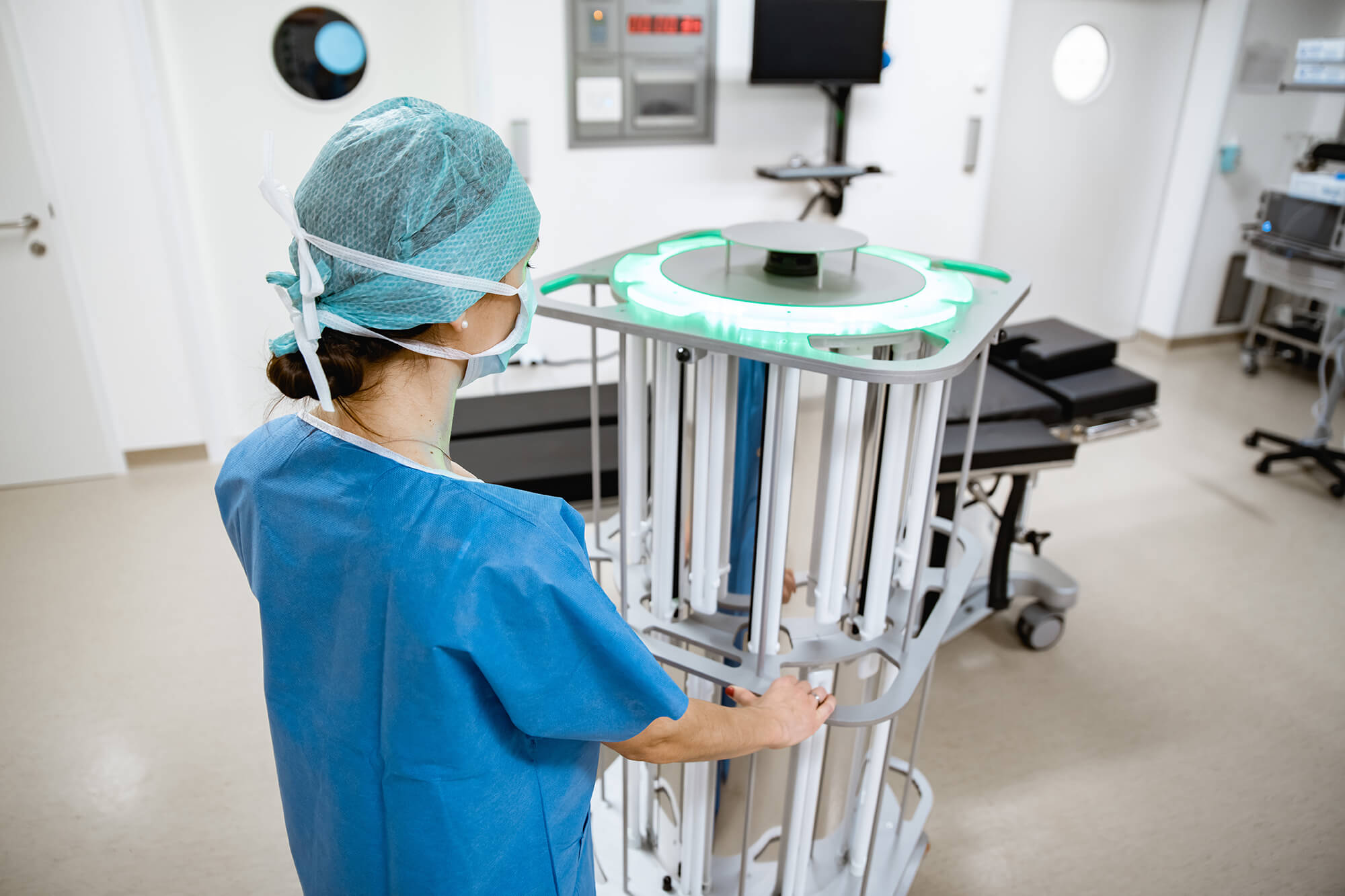UV-C technology in reduction of infections caused by antibiotic-resistant bacterias
The severity of the coronavirus pandemic has not only highlighted the significance of simple hygienic practices but also the alarming consequences of insufficient disinfection practices in health-care environments and high traffic facilities such as airports, public restrooms, cafeterias, halls, lobbies and elevators.
Disinfection using ultraviolet-C (UV-C) radiations has been extensively reported as an effective method of eradicating microorganisms by damaging their genetic materials (DNA). UVC robots like SteriPro can simplify and enhance the process of sterilization in hospitals.
Environmental surfaces such as bed rails, door handles, bathroom faucets and door knobs, keyboards and bed tables act as a storehouse of potential pathogens and contribute to the transmission of pathogens to hospitalized patients.
Over a 6-month period developed and implemented a dedicated service model of environmental decontamination reduced HAI’s by 34.2%

Study made at Hollywood Community Hospital/Brotman Medical Center Campus (HCH/BMC) in Culver City, California:
The first phase was comparison between environmental services (EVS) cleaning and UV-C disinfection. The study was made on 54 microbiological samples.
The second phase of the test evaluated the effect of UV-C disinfection on HAI incidences in facility-wide ICU rooms across multiple divisions including cardiac and surgical intensive care, cardiac/telemetry, medical/surgical, and acute rehabilitation units.
Of the 54 samples collected in the efficacy trial, there was no significant difference in the number of positive cultures before and after EVS terminal cleaning.
Interestingly, the UV-C technology reduced HAIs by 34.2% in a six-month period.
Five pathogenic organisms were identified in the incidence proportion. Incidence of three of these organisms were reduced significantly (71.4% decrease for Acinetobacter baumannii, a 42.7% decrease for Clostridium difficile, and a 100.0% decrease for Klebsiella pneumoniae)!
Automated disinfection solutions like SteriPro can save over 2 hours in disinfection workflows, generate real-time data on the disinfection status of rooms and reduce work-load of EVS personnel.
This study was conducted in a functioning hospital and the positive results obtained from a six-month observation period suggests that implementation of UV-C technology in health-care settings can improve the prevention of incidences of HAIs and uplift the overall sanitary status of hospitals and other public/high-traffic areas.
Napolitano, N. A., Mahapatra, T., & Tang, W. (2015). The effectiveness of UV-C radiation for facility-wide environmental disinfection to reduce health care–acquired infections. American Journal of Infection Control, 43(12), 1342–1346. doi: 10.1016/j.ajic.2015.07.006



